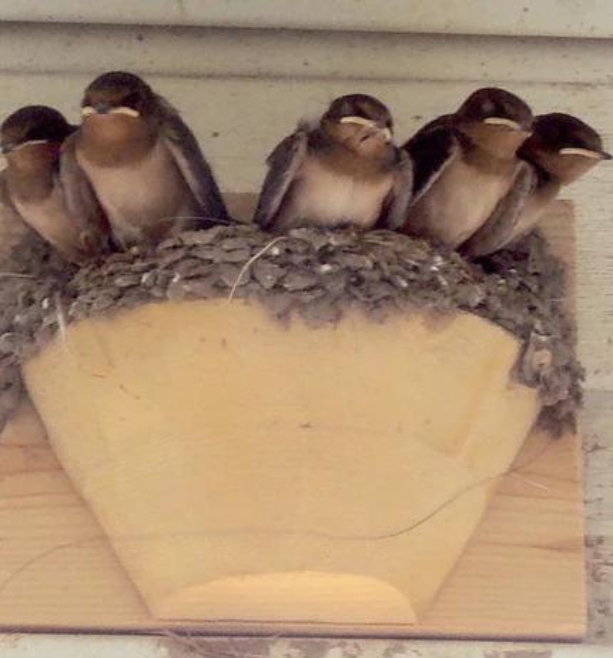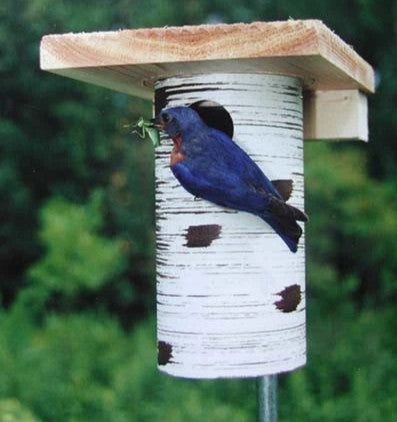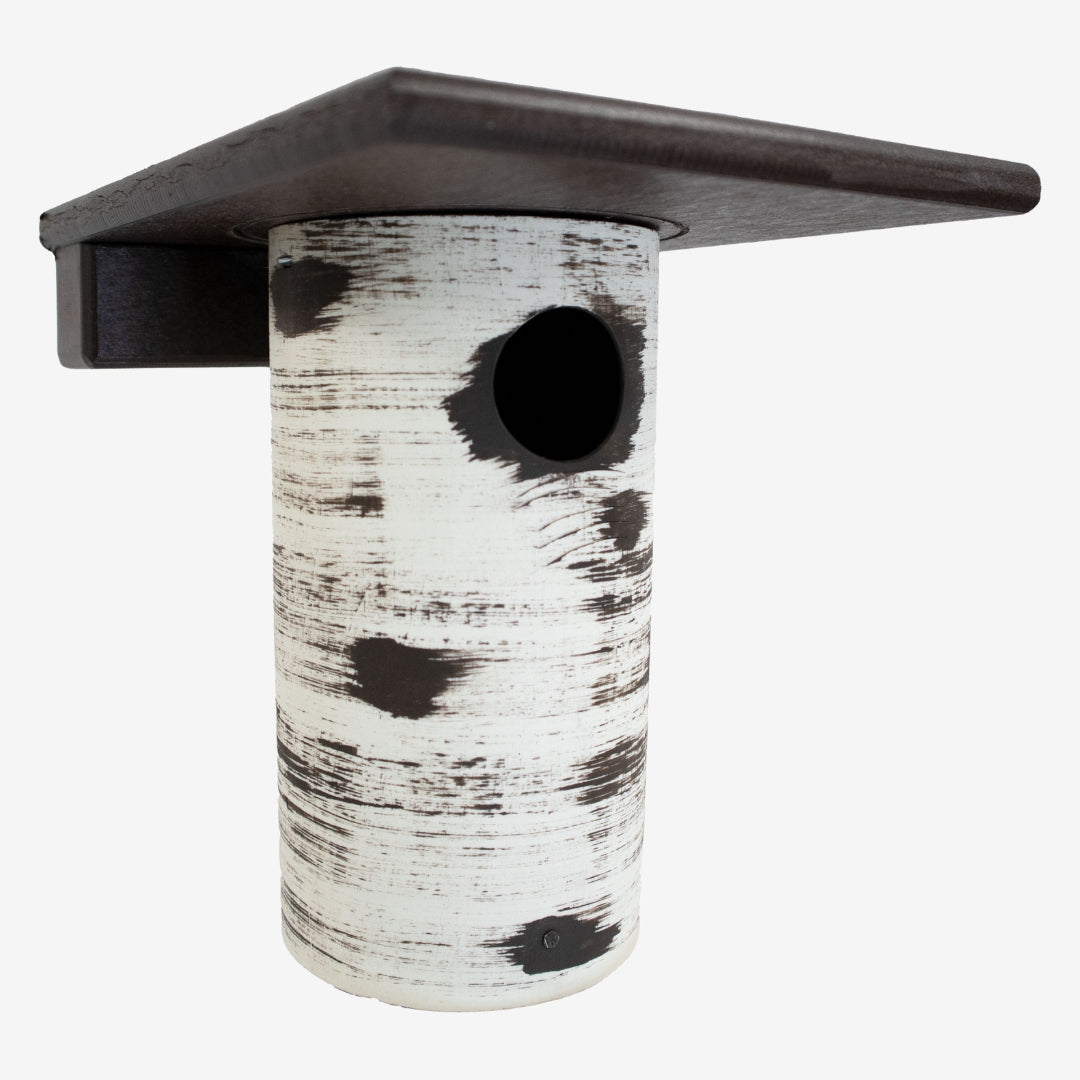Best Wild Bird Feeding Strategies - the following is a list of the relevant issues that should be considered in all bird feeding strategies.
1. Manage your property
Manage your property in an ecologically sound manner. Reevaluate the landscaping of your property. Lawns are very expensive, labor intensive, and ecological deserts. We recommend you minimize the size of your lawn and maximize the natural features of your property by adding plantings of indigenous plants and habitat features that support the local bird populations. Maintain your lawn with ecologically compatible products rather than chemical toxins. Remember we all live downstream.
2. Become familiar with the local species
Become familiar with the local species and their natural histories. The first step in developing a bird feeding strategy is to become familiar with the local bird species, which species are year-round residents, which ones are seasonal visitors, which species are likely to visit a feeder, and which ones aren't.
3. Group birds by their type of food
Group them by the type of food that makes up the major portion of their diet. In general, birds can be grouped together by the types of food they eat (trophic levels). This does not necessarily mean that granivores (seed-eaters), for example, eat only seeds. Granivores prefer seeds to other foods and specific types of seeds to others. Since it is rare in nature to find a food that is readily and always available, it is important to remember that most birds select food in order of their preferences.
While there are a number of trophic levels, backyard bird feeding usually involves only four:
- Granivores - seed or grain feeders like finches and sparrows. Many seeds and seed mixes are available for granivores.
- Frugivores - fruit feeders like tanagers. There are dehydrated fruit products for frugivores.
- Insectivores - insect feeders like blue birds and woodpeckers. There are a number of live and dehydrated insect products.
- Nectarivores - nectar feeders like hummingbirds. There are several commercial nectar diets available.
4. Maximize natural food sources
Evaluate and maximize natural food sources available on your property. Wild birds usually prefer their natural diet to commercial products. There are many sources for information on how to maximize the natural appeal of your property to birds. If you are familiar with the natural history of the species you want to attract, you will know what food supplies and habitat features to maximize for their benefit.
5. Offer supplemental foods
Determine what supplemental foods to offer. Not all commercial bird foods are created equal. The vast majority of commercial wild bird diets are formulated and packaged first to attract consumers, second to attract birds to an observation site, and last, as well as least, to provide a nutritional supplement. They are not formulated nor intended to meet all the nutritional needs of birds.
Birds meet their nutritional needs by eating a wide variety of foods. Even if you were to offer a variety of seeds to granivores, for example, it would be impossible to meet all the nutritional needs of the birds because they will not eat all of the seeds offered. Feeding preference studies have shown that most granivores prefer by a large margin black oil sunflower and white proso millet seeds.
The quality of commercial seed mixes is a function of the proportion of black oil sunflower and white proso millet seeds to other filler seeds that usually end up on the ground. We recommend feeding seeds (preferably only black oil sunflower and white proso millet) for behavioral enrichment only, once a week on a random schedule.
We believe that a wild bird food should be formulated first and foremost to meet the nutritional requirements of birds, second to appeal to birds feeding preferences and natural behaviors, and last to attract discriminating consumers/birders/keepers who want to help wild birds thrive.
If you want to support bird populations, you need to offer commercial bird foods that are formulated to meet all the nutritional needs of the target species or trophic level. Our products meet all the general nutritional needs of birds and we recommend that they be the only bird food offered free choice at all times.
Like all wildlife, birds are instinctively very wary of change. Habitat changes, dietary changes, feeding site or feeder changes and generally anything that is different will cause them to avoid a feeding site until they feel safe enough to resume feeding activity.
New foods that are unfamiliar will remain uneaten until birds overcome their natural reticence to try something new. They may never accept it. When offering our products for the first time we recommend offering small amounts. If no feeding has taken place, replace the food after two weeks. If feeding has occurred, manage as usual.
6. Feeders
There are several important factors to consider in selecting a feeder. The most important consideration is how well the feeder will accommodate the feeding behaviors of the birds it is designed to serve.
For example, a group of insectivorous species including woodpeckers hunt insects in the bark of trees. Woodpeckers use their tail for leverage when "hammering" into tree bark by pressing the tail against the bark. Woodpeckers will feed on suet cakes in hanging basket feeders.
The cheapest of these feeders is nothing more than a wire mesh basket that accommodates a standard suet cake. This feeder is satisfactory for the smaller woodpeckers, but is awkward for larger woodpeckers that are unable to use their tails for support.
The best cake feeders are those that permit maximum air circulation around the cake and have an extension on the bottom of the feeder large enough to accommodate the tails of larger woodpeckers.
Another important consideration is how well a feeder preserves and protects the nutritional quality of the food it is designed to accommodate. It is very important that whatever food you offer remains dry and out of the direct sun.
If a feeder, regardless of type, allows rain to reach the food, you should use it only with an overhead shelter that protects it from the rain. Wet food including seeds can mold and cause harm to birds. The heat from direct sun exposure can breakdown nutrients.
Finally, how easy will it be to clean the feeder? A feeder should be designed for ease of cleaning. That usually means it is easy to disassemble and it is constructed of materials that are nonabsorbent.
Recycled plastic is ideal. Wood on the other hand, although widely used is not recommended as it is relatively absorbent, difficult to clean thoroughly, and can promote bacteria and mold.
For example, one of the common wood feeders is a hopper type seed feeder with ends that are modified to hold suet or food cakes. Unfortunately, the cakes are usually in direct contact with the wood at some point, which encourages bacteria, and/or mold development.
7. Locating feeders
This is very important in terms of effective feeding strategies. Birds are very vulnerable to predation at feeding sites because the focused avian activity will eventually draw the attention of predators. Birds are hunted from above by avian predators like cooper and sharp shin hawks and from below by cats, snakes, and other small predators.
If you set up a feeding site you have a responsibility to minimize vulnerability to predation. Have you ever noticed how birds at a covered feeder constantly lean out to check the sky overhead? They are looking for predators.
A feeding site should consist of the feeders and a nearby landing site from which the birds can safely search the feeders for predators.
The landing site is preferably a tree or shrub sufficiently open that approaching birds can easily determine prior to landing if it harbors any predators, but far enough away from the feeders, typically 10-12 feet, that it does not provide a launching site for an attack on feeding birds. The feeders should be protected from rain and direct sun especially from the south and west.
The primary predators frequenting feeding sites are hawks and cats. If you own a cat we believe that you have a responsibility to prevent your pet from killing birds by keeping it indoors.
The Audubon Society strongly urges cat owners to keep their cats indoors. Please keep in mind that domestic cats are not native to the US. and they number in the millions. They kill millions of birds every year.
8. Feeding strategies
Wild birds will always select food based on their preferences. Wild birds have an instinctive wariness about any change in their habitat. When setting up a new feeding site, be patient. In the beginning, offer foods that the target species cannot resist like black oil sunflower, white proso millet, Niger (thistle), live or dehydrated meal worms or wax worms, currants, or peanuts depending on your target species.
Remember that these foods cannot meet all the nutritional needs of birds. After the birds have become accustomed to feeding at the site, we recommend adding a nutritionally complete diet like FNK Nutri-Cakes and Nutri-Dough to the menu.
Birds usually are reluctant to accept a new unfamiliar food even when it's better for them. There are feeding strategies like "bait and switch" that can facilitate the acceptance process. Offer the new food alongside the standard fare. Birds will soon overcome their caution and feed on the standard food. They will quickly become conditioned to the presence of the new food.
To encourage the birds to eat the new food, gradually reduce the availability of the standard food over a 2-4 week period. Remember birds will always select foods according to their preferences. Granivores, for example, will always select seed over a commercial diet.
In order to ensure that they are receiving all the nutrients they need, offering seed or any other attractants must be severely limited to a small, occasional, random feeding.
9. Wild birds compete for limited resources
Wild birds, like all life forms, compete for limited resources. Their resources are further limited by our actions like habitat destruction or disruption, pollution, and introduction of alien species like the European starling and the house sparrow. Both have contributed to the declines of some native bird populations and should be eliminated from your property by whatever means are ethically acceptable.
Squirrels and raccoons are probably the two best-known mammal competitors. There are generally two strategies for dealing with them. Block their access to the food by using one or more of the many exclusionary devices and feeders on the market or offer them their own food.
Author: Willis J. Whittaker, 30+ years experience as an animal care professional, BS in Natural Resource Management & BA in Environmental Ethics. www.aviancuisine.com
Article Source: EzineArticles.com/?expert=Bill_Whittaker









